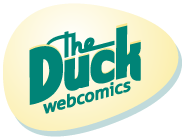
Frames (a.k.a panels) are great, they can look simple or extraordinary, they can help the comic flow and provide feelings, a feeling of dread, excitement, anger, etc. Frames are more than just lines that encase the moments of our characters.
When you’re making your frame you always want to make sure you’ve enough space to include the main image in which you wish to showcase to the readers and some of the speech, the speech doesn’t have to be squeezed in the panel, it can absolutely overflow, so don’t let the speech bubbles spook you and your frame making!
Now, besides the regular main stuff that we all know about, which is showing our characters off and giving them enough space to breathe, what else can we do with our frames?? Well, for starters we can try and examine the mood, are your characters fighting? Are they crying? Dreaming? Your frames can reflect what your character is feeling besides your character’s expression or speech.
Turmoil? Disbelief? Anguish? - make your frame have shaky lines.
The shaky lines help give away the inner turmoil the character is going through.
How about struggle? A fight? Maybe an expression of anger?
Stray and harsh lines can help the action be conveyed beyond your character(s) fighting or the emotions they’re feeling, such as if they’re releasing their rage, shouting or throwing something.
And what about movement? Some times making your character or an item break out of the frame can help, such as:
It’s not a big wow, or anything major, but beyond the effect on the bolt and the additional stray white lines, breaking the frame open can also help. Never underestimate what a good popping out of the panel can do!
I really love breaking the frames open or making the character/object pop out of the frame to represent the feeling of movement, but I normally prefer to do this when a character is either rushing or their steps are of big importance.
In this example:
I like to imagine she’s rushing, her steps are fierce, quick but still elegant, the full page would provide better context as to why she is hurrying, but for now this is what we get :p
How about using absolutely no frames???
I personally love frameless pages, especially when you’re showing off a new scenery of great importance, maybe something big will take place or something big has taken place, whatever your reasons, it has a feeling of an open world, there are no boundaries, you are here with this character and there are no frames constricting you to a spot on the page. Your eyes are free to wander through the barriers.
Of course having no frames doesn’t mean you can’t include other scenes onto the page. Since my pages are too big and squeezing them down would lower the quality to a pixelated potato, I’ll be linking them, look at them if you want!
Example one, there is one frame, but besides that frame, there are two scenes being blended together, the environment is meant to be taken in, no big blocky distractions.
Example two, no frames, a seamless look to express a calm transition from a snowy landscape to the character staring out into the world before her.
You know what else frames can do?
They can provide smooth transitions, pacing, flows and more.
You can give them different shapes to tell a story or piece a story together.
Below, is a piece of the first page of my comic, if you had just come across this page randomly with no context beforehand, you might not know the woman with raven hair is the main character or a character of importance until the last frame.
-or you might have known because at first glance she very obviously pops out of her very last frame – but the first frame gives us a general view of possibly just the random characters and then the second frame gives us a gorgeous dead on right in the center of the frame, a character that is speaking, to only then have another frame next to it reveal to us, a main character/protagonist/antagonist, whatever you decide to do with your own comic or whatever the reader is thinking at this moment in time upon seeing her. These frames are also perfectly pieced together like a puzzle, meant to provide a smooth introduction into the story.
You can also utilize your frames to show the smaller details of a character’s movement.
Walking out the door?
bam, you no longer need to show your whole character opening that door, a simple shift of the door knob and seeing the door slightly open and your character’s footsteps making their way out is honestly good enough. That’s why frames are so great too, they come in all shapes and sizes and you can make it fit perfectly to show the smaller details, you no longer have to debate if your character should just materialize out of thin air into the next room or if you should actually completely draw your character opening the door and stepping out.
You don’t have to make crazy frames or even give them emotion like I do, I promise you that readers aren’t anal about that and you need not fear the fancy frame making that I showed.
Things that I would keep in mind about creating frames:
1. Give them varying shapes and sizes.
Don’t make it all the same shape or size, doing so might actually kind of make your readers just gloss over and make their eyes wander in places they don’t need to yet. When everything looks the same or very similar, it’s easy to make the eye just go everywhere.
2. Don’t restrict your speech bubbles to only fit inside the frame.
Why do I say this? While it’s not necessary, I think having the speech bubble overflow out of the panel helps. It gives the characters more space buuuuut tip #3 also provides a different way of going about this.
3. Reflect your frames based off of the what you plan to illustrate.
If a particular character has a lot to say, make their frame bigger, don’t restrict them. If they’ve got a lot to say, they’re probably the main focus anyway. I’ve personally forgotten to include the speech bubbles into my page making and it has hindered me A LOT. Take my advice, lay out the text first and work with it.
4. Not necessarily a frame-only-tip, but relating to #3, don’t be afraid to break the speech bubbles up!
While you can have the main subject be the biggest frame, don’t forget there are other characters and more to your environment, feel free to make a few extra frames and maybe use it to show off the expressions from your other characters or maybe their responses in between the break of the main subject at hand.
Such as: “So there was this cute vampire guy at the mall today,” “yeah?” “and I totally went up to him and asked him to bite the crap outta me.” “…” “what? Too much?” character exits scene
And with that the article reaches an end! Those are my tips and my reasons for why frames are magical.
Frames can either enhance or hinder your story, so use them wisely, they really provide a huge boost to the visual pacing, don’t be afraid to experiment, have fun, dip your toes into the water.
And remember, my articles are only opinions and not a strict way of telling you how comics work!
See you next Sunday!! :) <3

The Magic of Frames
damehelsing at 12:00AM, May 30, 2021
9 likes!


©2011 WOWIO, Inc. All Rights Reserved Mastodon





dpat57 at 11:23PM, May 31, 2021
That's another great article. Have fun indeed, *but* he suggested gently, just don't make things so crazy I can't follow what the heck's going on. It shouldn't be a puzzle!
Furwerk studio at 4:39PM, May 30, 2021
I love playing around with frames within a comic, at times many artists try the medium just like a film when one can do so much, like bend, break, stack, warp and mess with them. *Spoilers for Crisis on Infinite Earth.* The famous scene of Crisis on Infinite Earth of Barry Allen is a great example of playing with frames, he is disintegrates while running around the anti-monitor's machine to show how fast he is both going, and the serious and weight of the situation. Hell one trick I like to do I picked up from Image comics like the Maxx is to have the panels shaped like sound effects for extra impact. Honestly it is kind of sad that not many artists like to play around with panel shapes or ideas, or learn how they work. OH, and just a tip, look up Wally Wood's 22 panels.
paneltastic at 8:44AM, May 30, 2021
And sometimes, when the moment is just too big to contain, you set them free from a frame all together. I do this alot for big moments where several frames will lead into a no-frame splash panel.
Banes at 7:38AM, May 30, 2021
Ha - I just went back and checked my comic after making these claims - it's not true at all. I began breaking the mold on page 3, haha. Funny how vividly I remember the decision to keep it a certain way.
Banes at 7:34AM, May 30, 2021
Fantastic article - it's true; so much important information, emotion and tone can be revealed with the panel construction. I started my comic only doing three wide frames, one on top of another on every page. I intended it to be that way for every page, for however long the comic went (I saw that approach in the comic Nemesis and liked the uniformity). But after awhile I started breaking out of that and trying to use panels a little more creatively. Lots more could be done though, as you point out. Great stuff.